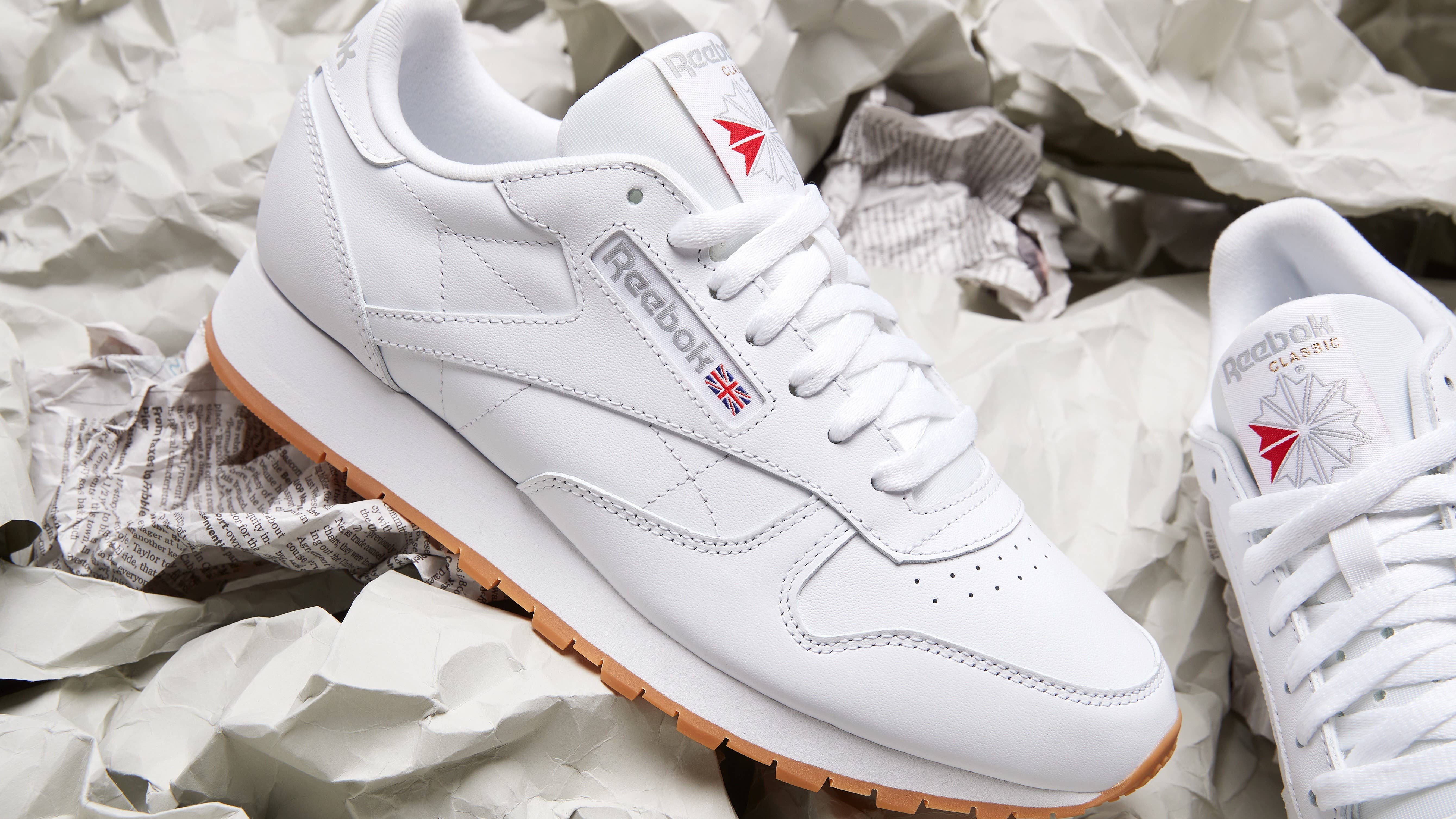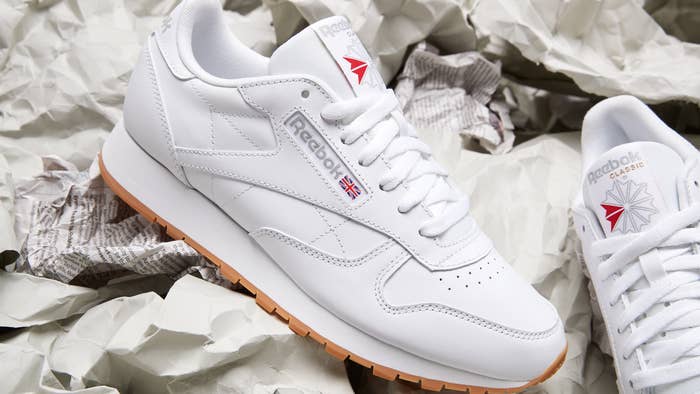
This week, Reebok is born anew. The sneaker brand has evolved a number of times in its century-plus history, beginning as a British manufacturer of running spikes in 1900, morphing into an American sportswear powerhouse in the 1980s, when its white leather footwear dominated the market, and then being bought out by Adidas in 2005 for $3.8 billion. Now, under new ownership, Reebok is looking to remake itself.
“I feel like we were driving at 50 miles an hour, and as this thing started to get ready, we’ve been driving at 100 miles an hour,” says Todd Krinsky, a senior vice president and GM of product at Reebok, who’s been there for almost 30 years. “It’s very exciting for someone like myself that kind of grew up here.”
Reebok was absorbed by Authentic Brands Group, an American holding company whose wide portfolio of over 50 brands also includes Aéropostale, Nautica, and Volcom. Adidas announced in August 2021 that it would sell Reebok to ABG for $2.5 billion; the acquisition was finalized Tuesday.
“We’ve had our sights set on Reebok for many years,” said Jamie Salter, ABG’s founder, chairman, and CEO, when the deal was first announced last summer.
His company was not the only suitor. Reebok was stuck in the final pages of its most recent chapter for nearly a decade—sneaker industry chatter had circulated since as long ago as 2014 about Adidas selling off the subsidiary. An analyst would suspect the end was near, Adidas leadership would deny it, and the future would remain uncertain. With the deal finally done, leaders at Reebok and ABG are looking at how to rebuild the brand’s business without sacrificing its essence.
“This has been a long dream of my partner Jamie and I,” says Nick Woodhouse, president and CMO at ABG. “I have a long background in the sneaker industry, and this is kind of the culmination of a career, and also the dreams of a terrific brand that was probably locked in a bit of a broken model.”
What will the fix look like for Reebok under ABG? The parent company recently announced a series of operating partners (like the New Guards Group in Europe and SPARC Group in the US) and retail partners (JD Sports, Foot Locker) that will act as stewards for Reebok globally. This more decentralized version of the brand does not mean it will license product—all design and creation will be routed through the Boston-based Reebok Design Group.
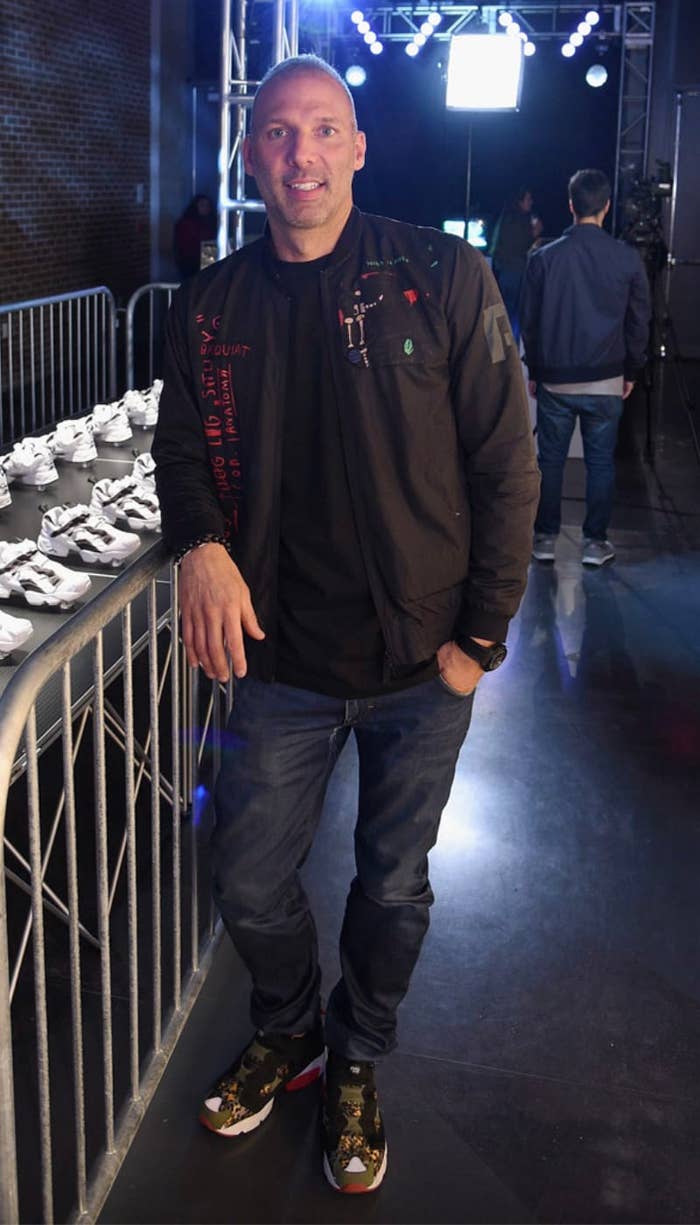
The move has already come at a cost, though. In January, Reebok president Matt O’Toole said the company would lay off around 150 employees ahead of the sale to ABG, according to the Boston Globe. But Woodhouse believes that in a few years Reebok will employ significantly more people than it did before.
“We have to make some changes to right-size the reason why the business is where it is today,” he says, “and then we grow the business.”
Speaking with Complex on the day the acquisition was finalized—Krinsky wearing Bape x Reebok Club Cs and Woodhouse matching him the Bape x Reebok Insta Pump Fury—the two broke down how they believe Reebok can thrive through its new structure, the powerful allyship of longtime Reebok signature athlete Shaquille O’Neal, the struggles of operating under Adidas, and more. The conversation has been edited for clarity.
Todd, you being at Reebok for almost 30 years now, how monumental does this change feel compared to everything else you’ve seen, being there for so long?
Todd Krinsky: Yeah, this is absolutely monumental. I feel like this is a great, great brand that has been somewhat marginalized in the marketplace. And I’m not just saying this because [Nick] is on the phone, but you’ve got these owners that are so excited to bring this brand back and unleash the brand in the marketplace. It’s just really a breath of fresh air.
And we’re talking about the right things. We’re talking about the premiumness of the brand. We’re talking about the sport heritage of the brand. We’re talking about its place in sneaker culture. So for me, it’s a monster, monster time for this brand.
ABG has a big portfolio, but I feel like there’s nothing quite on the level of Reebok when it comes to sneakers. So how does Reebok fit into the ABG structure?
Nick Woodhouse: It’s a great question. You’re correct in both those assumptions, we do a lot of shoe business, but it’s more in dress and casual. This certainly is our largest athletic lifestyle footwear and apparel company. And right now it fits as a standalone to be quite honest.
ABG is a platform, but at the same time, one thing that we recognized early is the concept of licensing athletic footwear and allowing individuals to manufacture footwear independently of the Reebok Design Group is not a good strategy. The consistency of the Club C around the world is tantamount to success—the fit, feel, the leather, as well as any new heat that we bring on, whatever they may be. If we bring back a certain color of the Question or the Answer, or the Reebok SXT or CXT, it needs to be consistent around the world.
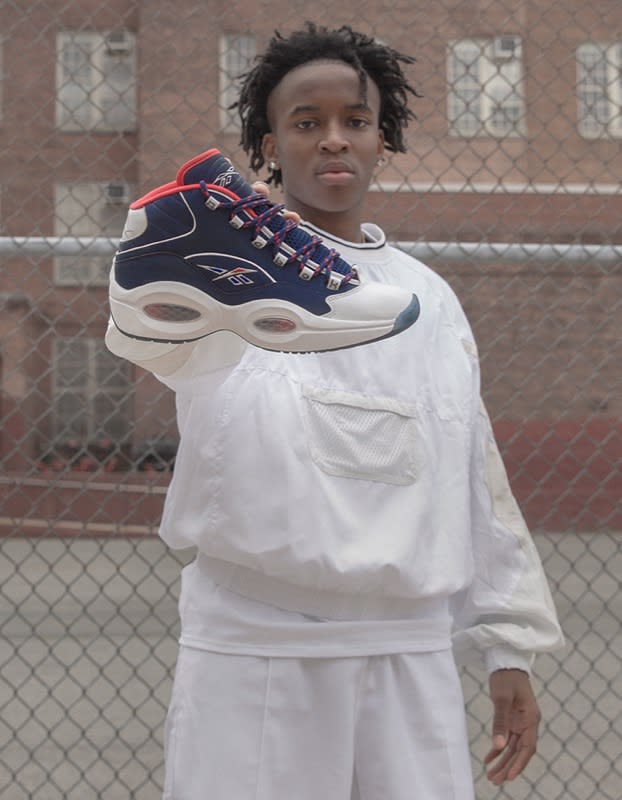
That will be the one change from our portfolio that all design and storytelling will come out of Reebok, Boston, as it always has been. With a lot of input from the international partners around the world, because these days, it’s cliche, but you do have to think global and act local. And we also have to listen to the needs of all of our international partners in terms of what they require for their markets. But at the same time, not allowing Reebok DNA to be diffused at any point. So business as usual for ABG, but at the same time, all design and product inspiration will come directly out of Todd and his group in Boston.
Basically, you’re saying you don’t want to just license the product because it’s too risky in terms of watering down what Reebok means?
NW: Yeah, and that’s what we did. So, these distribution agreements we signed around the world that you read about, these are not agreements to allow people to make shoes.
Basically, what we’ve done is, we have set it up so there’s going to be way more eyeballs on Reebok, whether there’s physical eyeballs or whether it’s digital eyeballs, by just expanding our customer base all in areas which are accretive to the brand. So my long answer to your short question is yes, exactly that. We did not want to lower the integrity of the brand nor of fit and function, because the Club C is a great shoe and the Dunk is a great shoe. Part of the reason the Dunk is a great shoe, and I don’t mind talking about Nike, is that it fits really well and it looks great and it’s consistent around the world and it’s the same thing with our shoes. They need to be consistent around the world.
It looks like a lot of the business will be done through these operating partners that you’ve already announced—New Guards, SPARC—and then retail partners like Foot Locker and JD Sports. Can you explain how that structure works?
NW: I’ll let Todd jump in too from a product perspective. Take New Guards Group as an example: New Guards is our partner. Well, they’re partners in two ways. One, is they’re a partner in Europe, so they have the rights to Reebok wholesale, retail, and e-commerce for all of Europe and greater Europe. So it is their P and L, it’s their responsibility. Now they will meet with Todd and his team many, many times throughout the year to look at the product range. And then they will sell that into their customers. And if there’s a separate European range that is needed for footwear, for apparel, they’ll work with Todd on creating that range. And that’s the same as all the other partners that you mentioned.
And then the other piece for New Guards group, which is really cool for this conversation of course, is that they also have what we’re calling a pinnacle license. Actually, I’m going to correct my statement of earlier. This is where we are allowing New Guards Group to make footwear under the approval of Todd, but I think we all would agree that New Guards Group does know how to make shoes and they do know how to bring heat. There’s multiple ways they’ll be working with us.
One, they’ll take a legacy product, like a Newport as an example. They can maybe take a Newport and they might reimagine it, very similar to what they’ve done with, rest in peace, with Virgil’s shoes or whatnot. Or they can come up with something totally new. If they want to come up with a new dad shoe or a new midsole, all run through Todd and his team for approval, they also could do that.
TK: Yeah. And some of the products will be made in premium factories in Italy and distributed around the world, and some will be in our current supplier network, but the idea is to create a really strong luxury premium range in collaboration with them. To Nick’s point, they could be taking the Club C and just doing a version of it, but they could also be imagining something new with our DNA. We’ve had a lot of conversations with them and they’re a very, very connected group with a very high, high taste level, and we’re not entering this partnership so they can go out and get a third party and we’re going to slap the logo on the midsole, some premium mark. We’re looking to find the right partners, do some rich storytelling, and create some really strong, long-lasting product. So the early conversations have been really encouraging.
Todd, this feels like something pretty new for you. I’m trying to remember if Reebok has ever had a setup like this, where you’re working with these global partners on design.
TK: No. This is definitely like a watershed deal for us. We’ve allowed obviously designers to collaborate with us and create their own, but we’ve never actually worked with a third party like this that will bring in fashion partners, that will design some of the product. We’ll design some too, it’ll be a collaboration, but you’re right. We’ve never done anything like this. I think, to Nick’s point, they’re so connected, they’ve got such a high aesthetic and taste level. There’s a lot of trust. I think we’ve been talking, Nick, maybe for six months with them, at least, in multiple meetings. So there’s a high trust level on both sides and it’s going to be very collaborative, but you’re right, it’s the first time that we’ve ever at some level handed over the keys in creation, but I think this is going to bring some really, really, really strong product.
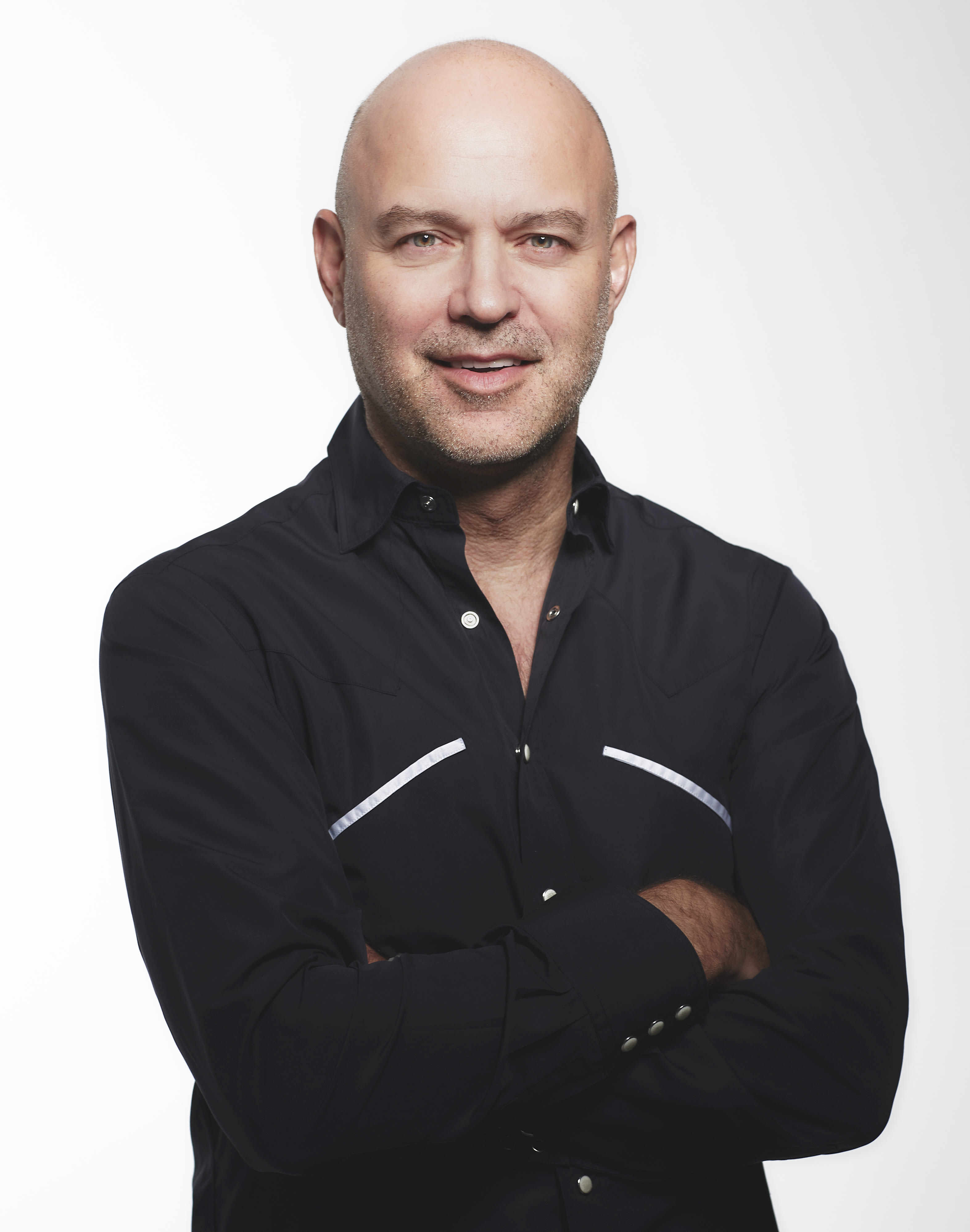
NW: I’ll probably add to that, too. If you think about it, these global partners, given the way that the world is shrinking every day in terms of, whether it’s social media or media and everyone knowing what’s going on around the world, having regional input is so incredibly important. And I think that has been the downfall of a lot of American-based companies, that they have been very, let’s call it, very centralized in their decision making for countries. And I think anyone would agree to sit in Boston or in London or whatnot and make a decision for Hong Kong or Shanghai or Calgary for that matter, is probably not a good long-term strategy.
You need to have your core product that everyone’s going to like, but then you got to figure out what are we going to do? And I’ll give you an example, we have a partnership with some big Canadian retailers that we haven’t announced yet. I don’t know if you’re a hockey fan, they want to bring back the Sidney Crosby Reebok shoe. Right? That shoe, outside of Pittsburgh, probably will not work anywhere, right?
But that is a decision that Todd will make with them to bring back. If a retailer in the US wants to bring back the Emmitt Smith, we know it’s going to play very well in Texas as an example. So we’re going to make sure there’s very, very strong regionalization of product as well.
This looks to me like it’s the opposite direction where some of the other big brands are going. Nike’s pushing to do more and more direct-to-consumer where it feels like this new version of Reebok is saying, “We’re OK with letting distributors and retailers take on some more of this business.”
NW: That’s very astute. I don’t mind saying, I think that inflection point—you can’t critique Nike for anything they do, because they’re a tremendous company. They have an unbelievable track record, right? And I get it, they want to control the distribution and they want the margin. We’ve said we’re a big believer in wholesale and retail, whether that’s digital retail or physical retail. And there’s great partners out there, like JD Sports, like Dick’s Sporting Goods, like Foot Locker that tell its amazing story. And we’re happy to be partners with them and give them what they need to service their consumer.
Foot Locker seems especially relevant here. Their stock just took a huge hit after the news came that they wouldn’t be carrying as much Nike, which could give Reebok more room on their shelves via the partnership to have AI and the Shaq products sold there exclusively.
TK: I think right now, there’s a lot of that going on. There’s a lot of open divide and there’s a lot of opportunity right now. Not just Foot Locker. We had a very, very, very strong ‘21. Our products are checking at retail and these retailers like Foot Locker and JD are coming to us and saying this is the right time. “We feel that we can take more of your product.” So some of these stores, we’re going to go from six shelves to probably 25 shelves next year. So I think the marketplace is going to see Reebok in a much different display on the shoe shelves. And I think because we are selling and because brands are choosing to maybe pull out a little bit, it’s the perfect storm for us, it’s just a really good opportunity for us to take advantage of.

I want to talk about Shaq a little bit more because I know he’s an investor in ABG and has been vocal about the acquisition. What role has he played in all this?
NW: It’s a great question. Other than, to your point, he’s our business partner, sometimes it’s easiest to just say Shaq is Shaq. Right? And what I mean by that is, everyone takes his call. Everyone stops talking when he talks and everyone listens, right? So having Shaq on your squad is unbelievable. And that’s from door opening, from press, from publicity. He’s a great businessman. So has a lot of tremendous ideas and connections. I get my daily FaceTime from Shaq on, hey, we should do this, or, hey, we should do that.
Shaq calls you every day?
NW: Ask my wife, yeah. And like I said, if Shaq FaceTimes me, I generally pick up, because it’s Shaq. I still get tickled pink that he wants to FaceTime me. And you got to remember, not just about Reebok, he calls about our business all the time. That’s how active of a businessman he is. Todd and I will lean on Shaq on product. We’ll lean on him on connections. We’ll lean on him on what we should do with his shoes, how we should reintroduce his shoes, etc.
TK: Yeah, definitely. He has been talking about wanting to be an owner in Reebok for maybe four or five years. Nick knows a little better how long, but this has been a big passion for him. I have a long history with Shaq as well. In 1992, I was delivering mail at Reebok, that was my job. And the first athlete that came to the old campus was Shaq. And they had this big tent and they were celebrating the signing of him. And I snuck into the tent and I shook his hand and I said, “Someday we’re going to work together.” And he had no idea who I was and I was literally delivering mail. And then years later we had a chance to work together.
He left Reebok then came back and then we started to work on the retro product together. And obviously, we had a great run there. And then four years ago, every time I would see him, he’d be like, we’re going to buy it, we’re going to buy it. Eventually it’s going to get sold. He was very motivated on being part of the ownership team for Reebok. And he does, he has ideas of things that we should be doing so people should be associated with. So I think to Nick’s point, as we start moving here, he’s going to be even more involved.
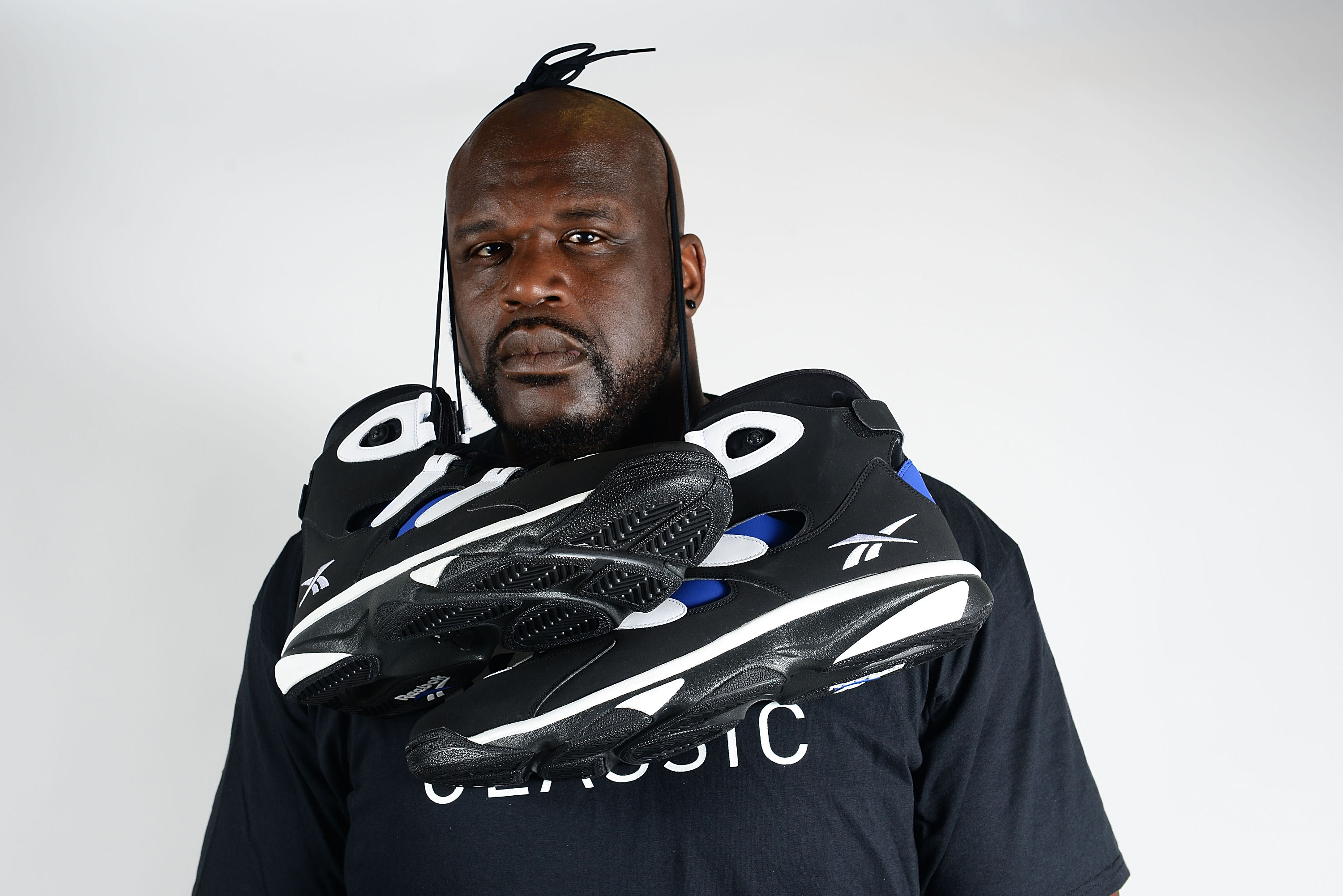
I heard there was a big meeting at Reebok after ABG was moving in where Shaq said, this was the moment for Reebok to “take our shit back.”
TK: Yeah, he said that on a Zoom to all the employees. People were excited about it. He’s got a lot of passion for bringing this brand back to prominence for sure. And he says that every chance he gets to the employees.
NW: I’m not kidding when I say that he’s involved, he’ll call me with shoes in his hands, or he’ll walk into a store and he’ll be like, why is there no Reeboks in here? Get it done. He’s passionate and he’s very involved.
One of the goals mentioned by ABG founder Jamie Salter in the press release announcing that the acquisition was finalized is to “let Reebok be Reebok.” Todd, why do you feel like that couldn’t happen when Adidas was still the parent company?
TK: It’s a really good question. Adidas is a big, big company and they had to make a lot of decisions to benefit the bigger brand. This is just the reality of what was happening. So whether it be partnerships, or some products, or having first dibs at an outside collaborator, we weren’t always given the opportunity to spread our wings and just be the brand. It was a little bit constricted in regards to what Adidas needed to do to grow their business.
And it was the right decision for Adidas to grow Adidas, but it wasn’t right for Reebok as a smaller challenger brand. So now, getting to embrace sport more and having the freedom to work with whoever we want around the world, these are the liberties, so to speak, that we haven’t had over the last few years. And that’s why we’re so energetic about this, what we’re calling this “unleashed” strategy.
It’s got to be hard though, to maintain the spirit of the brand, because you inevitably shed people during a merger. There are layoffs of about 150 people happening. How do you maintain Reebok while you lose all that?
NW: Listen, Todd lived it, so I’ll let him talk after me because it’s easy for me to answer this. The history of ABG is, if you look at brands or businesses we’ve purchased like Aeropostale, which was bankrupt. Forever 21, which was bankrupt, Brooks Brothers, which was bankrupt. Reebok obviously was not, but those other three brands and many others, those were jobs that were going to go away. Right? And now with our retail network we employ north of 50,000 folks. Everything we do generally is addition by subtraction.
So we have to make some changes to right-size the reason why the business is where it is today. And then we grow the business. And I think that Todd and his team and Matt O’Toole, the CEO, they made the right decisions on what needed to happen for us to get to the next level. And I think you’re going to see over the next three, four years, Reebok will employ a lot more people than they did two years ago for sure. I think we’re pretty confident that we have the right people at [Reebok Design Group] and the right partners around the world to make this happen. Again, Todd, that’s me, I’m ABG. What’s your thoughts?
TK: I think, Nick, they’re good points. Listen, it was a very difficult time. Anytime you have to go through a situation like that, it’s very difficult. I think though the entrepreneur, the free spirit, the heritage of the brand is still there. I think we still have a lot of the intellectual knowledge. We still have a lot of, the people that created the brand are still at Reebok. So I think that we’ve got the right team to amplify our heritage and to get this brand moving. But of course, it was a very difficult time for us. And I don’t want to underplay that at all, but the brand has so much momentum right now and such talent within that building that I’m really proud of the people that are continuing with us. It’s going to be great for us moving forward.

Where do the collab projects and the more sneakerhead-focused releases fall into this plan? I think the limited edition stuff that doesn’t necessarily add a lot to the bottom line seems like it could be a casualty.
TK: Nick and I probably spent half our time talking about the heat and the collaborations. The reason why though is because, you’re right. Some of these products are a little more limited when we do a Bape launch or something like that. The thing to keep in mind is what we try to do is have our collaboration partners work on our iconic product. So even if the consumer doesn’t go buy a $150 Bape Club C, they’re seeing that iconic silhouette, they’re seeing a cool brand working with it and that just brings the entire range up.
We see that we get more commodity sales on a white white Club C when we have a cool collaborator working on the higher-end Club C. It all flows together. It’s a huge part of our plan moving forward. That’s why we did the [New Guards Group] deal and that’s why within Reebok Boston, we’re still going to be doing a lot of these streetwear collaborations, because we feel like they bring a cash day to the whole brand and they can drive scale. They definitely can drive scale for us.
What does this new Rebook look like? Is it a company focused mostly on the retro product or is there still room for Reebok to create new performance products?
TK: I think the categories that we’re really spending the most time on are really heritage, which includes our retro basketball position, and then running and training. And if you look at the marketplace around the world, that represents almost 80 percent of the revenue in the sportswear markets. So we’re in the right categories, we’re in the categories where we have the right to be. A lot of those are iconic models that exist, like Club C, Classic Leather, Iverson, Shaq, the Nano on the training side. But there’s absolutely room to create. We have an innovation lab, we have two new technology platforms we’re going to be launching.
We really do believe that we are one of the few brands in the market that’s an athletic lifestyle brand. Meaning we are not the Under Armour, that can only play in performance, and we’re not a Fila, that can only play in lifestyle. We’re one of the few brands—and you know the other ones—that can play in sport, can be on the field to play on Saturdays and Sundays and then can also have a rich heritage with classics. We don’t want to push down or marginalize any of the opportunities. It’s a process, first we want to make our core really healthy and then I think we’re going to continue to look at other areas for sure.

